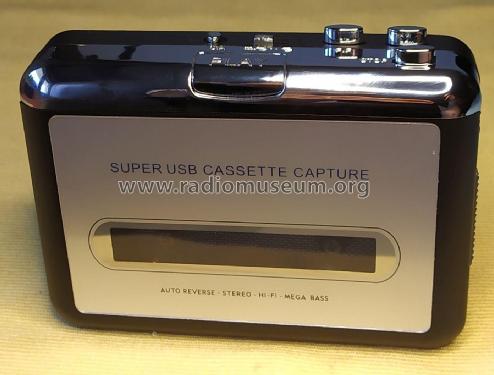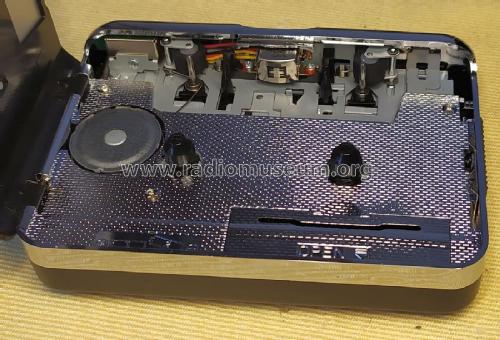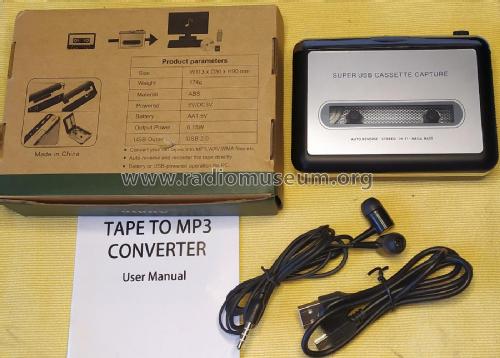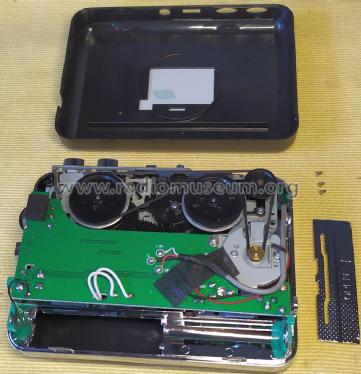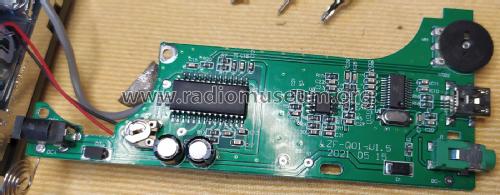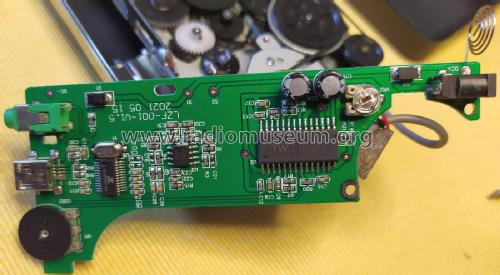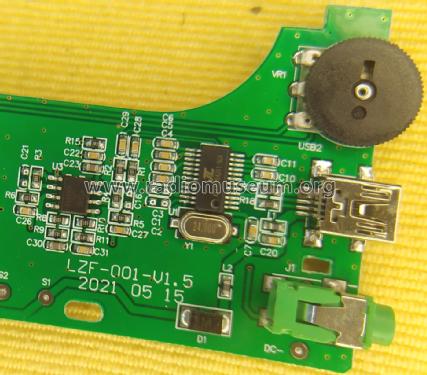Super USB Cassette Capture EZCAP 218
Unknown - CUSTOM BUILT: China
- Fabricante / Marca
- Unknown - CUSTOM BUILT: China
- Año
- 2021 ?
- Categoría
- Registrador o reproductor de sonido o visual
- Radiomuseum.org ID
- 339245
- Numero de transistores
- Hay semiconductores.
- Semiconductores
- Principio principal
- Amplificador de Audio
- Gama de ondas
- - no hay
- Especialidades
- Grabador y/o Reprod de cassetes; Converter
- Tensión de funcionamiento
- Pilas + jack (etc.) para alimentación externa. / AA 2 x 1.5; USB 5; DC 3 Volt
- Altavoz
- - Este modelo usa amplificador externo de B.F.
- Material
- Plástico moderno (Nunca bakelita o catalina)
- de Radiomuseum.org
- Modelo: Super USB Cassette Capture EZCAP 218 - Unknown - CUSTOM BUILT: China
- Forma
- Portátil de bolsillo , menor de 20cm.
- Ancho, altura, profundidad
- 113 x 80 x 30 mm / 4.4 x 3.1 x 1.2 inch
- Anotaciones
-
This is a USB Cassette Stereo Player that can run as a standalone unit, or used to convert audio analog cassette type tapes into digital files. Features bi-directional stereo play.
It includes a USB cable, Earphones, Operation Guide, and a mini-CD with Audacity software as accessories.
- Peso neto
- 0.174 kg / 0 lb 6.1 oz (0.383 lb)
- Mencionado en
- -- Collector info (Sammler)
- Autor
- Modelo creado por Jose Mesquita. Ver en "Modificar Ficha" los participantes posteriores.
- Otros modelos
-
Donde encontrará 526 modelos, 505 con imágenes y 30 con esquemas.
Ir al listado general de Unknown - CUSTOM BUILT: China
Colecciones
El modelo Super USB Cassette Capture es parte de las colecciones de los siguientes miembros.
Contribuciones en el Foro acerca de este modelo: Unknown - CUSTOM: Super USB Cassette Capture EZCAP 218
Hilos: 1 | Mensajes: 3
When I did the initial testing of this unit, I noticed the low level audio signal captured by the recommended Audacity software program. Audacity and Windows OS forums did not help. I followed the user guide, and have used earphones to monitor the audio to be captured by the computer software.
As a temporary solution, I have selected the captured audio section on the Audacity program, then selected the Amplify option from the Effect menu, accepted the proposed settings and pressed OK. The captured signal is automatically increased and avoiding audio clipping.
After dismantling the unit, I found the reason and a better solution.
The audio signal captured by the stereo read heads is handled by U2, a UTC668 (LAG668 equiv.) Audio and Motor tape player IC, made by YW (Hangzhou Youwang Electronics). The dual channel signal is passed to the U2 pre-amp section and the output is directly feed into the U2 power amp section, where the volume level is handled internally and controlled by a external mono potentiometer, as seen in the IC datasheets.
The dual channel power output of U2 drives the stereo earphones socket, and also drives the input of U3, a 4558D Dual OpAmps IC, made by JRC, acting as dual channel audio amp.
The output of U3 is finally passed to U1, a AS20BP0A201 A/D converter for audio with USB output, made by a popular, although not documented, Chinese JL brand.
As a result of this design, the digitalized audio signal level sent to the computer via USB port depends on the position of the U2 audio volume potentiometer, meaning that setting it for confortable level for earphones monitoring will result in low digitalized signal.
This design has some advantages, as it is easier to avoid audio clipping by reducing the volume on stronger Cassette recordings, or increasing the signal on weaker ones
However, the drawback of this solution is that the audio level at the earphones used for monitoring can not be adjusted for confort listening as doing so may create issues on the digital recording quality.
One fix to this issue would be to enable the audio monitoring at the computer side in the software setup being used to capture the audio from the USB port (as I did in the Audacity program).



Jose Mesquita, 15.Jul.22
